by Julie McConnell | May 26, 2017
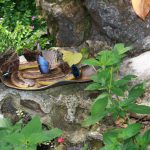
Blue Morpho Butterfly feeding on banana. Photo: J_McConnell, UF/IFAS
Have you been thinking about creating a butterfly garden but don’t know where to start?
Afraid it’s too much upkeep or has to look wild and untamed?

Red Admiral Butterfly. Photo: J_McConnell, UF/IFAS
Spend a Saturday morning with the UF/IFAS Master Gardeners of Bay County to see how to design, install, and maintain a colorful low maintenance butterfly garden.
Next Saturday, June 3rd, is the free Butterfly Gardening Workshop in Panama City at the UF/IFAS Extension Office at 2728 E. 14th Street. Come learn about butterfly gardening and see our vibrant garden.
Please register ahead of time so that we can supply enough materials for all attendees by calling 850-784-6105 or sign up online.
by Mark Tancig | Apr 24, 2017
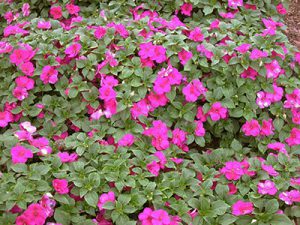
Source: UF/IFAS.
Impatiens are a very popular annual, bedding plant that provide a nice burst of color in the landscape. The traditional Impatiens (Impatiens walleriana), or touch-me-not, is the one that most gardeners know as needing part shade, but there are also the New Guinea Impatiens (Impatiens hawkeri) that are able to tolerate more sun. In addition to being able to withstand more sunlight, the New Guinea Impatiens also have larger flowers and leaves. Another highlight of the New Guinea impatiens is their increased resistance to downy mildew, a major concern for growers of touch-me-nots, especially in south Florida.
While native to the Old World, Impatiens are not known to invade Florida natural areas but may reproduce by seed. Touch-me-nots are known to spread easily be seed. An interesting fact about Impatiens is their bursting seed pods that can send seeds several feet from the parent plant. This characteristic is what led to the scientific name Impatiens – for impatient – and one of the common names – touch-me-not.
May is a good time to plant Impatiens in north Florida. They prefer slightly acidic soil and should be planted at a 12-18 inch spacing. Impatiens work well as a border planting or in mass plantings. While New Guinea Impatiens tolerate more sun, they still would prefer some afternoon shade. Those growing in full sun will need extra care to ensure they remain well watered. An all-purpose plant food can be applied at monthly intervals for best performance.
Some common varieties of touch-me-nots include ‘Accent’, ‘Blitz’, ‘Carousel’, ‘Dazzler’, ‘Impact’, ‘Impulse’, and ‘Super Elfins’. Common New Guinea Impatiens varieties include ‘Celebration Candy Pink’, ‘Celebration Light Lavender’, ‘Nebulus’, ‘Equinox’, ‘Sunglow’, and ‘Tango’. The newer ‘Sunpatiens’ variety is quite popular and comes in different forms – compact, spreading, and vigorous.
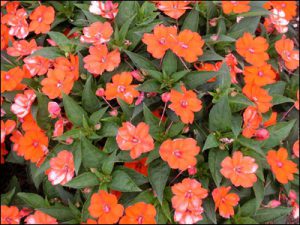
Source: UF/IFAS.
If you have any questions regarding Impatiens, please contact your local UF/IFAS Extension Office or visit our EDIS website at www.edis.ifas.ufl.edu.

by Beth Bolles | Oct 7, 2016
The year’s mild winter and frequent rain showers have created lush lawns and gardens with an abundance of insects. As a result, we are seeing many predator arthropods taking advantage of the available feast. One of the morning interesting creatures in the garden is the spiny orb weaver spider (Gasteracantha cancriformis) that has an interesting body shape.
Spiny orb weavers are common spiders in landscapes that might not be noticed since they are much smaller than the Yellow garden spider (Argiope aurantia) and the Golden silk spider (Nephila clavipes). Once viewed, the spiny orb weaver will catch your attention because it’s abdomen has six ‘spines’ or points that extend out. Spiders also have a mix of yellow, white, red, or black marking on the abdomen.
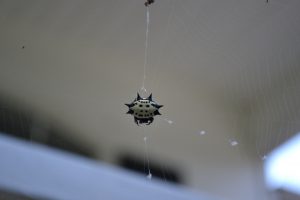
Spiny orb weaver in the center of the web waiting for a meal. Photo by Beth Bolles
Although spiders are small, the webs which are common amongst shrubs, trees, and edges of woods become quite substantial in the fall. There may be up to 30 spirals that extend out with the spider situated in the center. You may unexpectedly encounter a web when walking through the garden or mowing around trees and shrubs. There is no worry if a spider accidently gets on you as bites are not common and not considered serious.
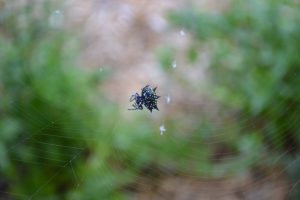
Spider working on her web. Photo by Beth Bolles
Some may refer to the spiny orb weaver as a crab spider based on its shape, but it is a web building where the true crab spiders are active hunters often found resting on flowers in order to ambush a meal.
Enjoy our fall weather and look out for this beneficial spider in your landscape.
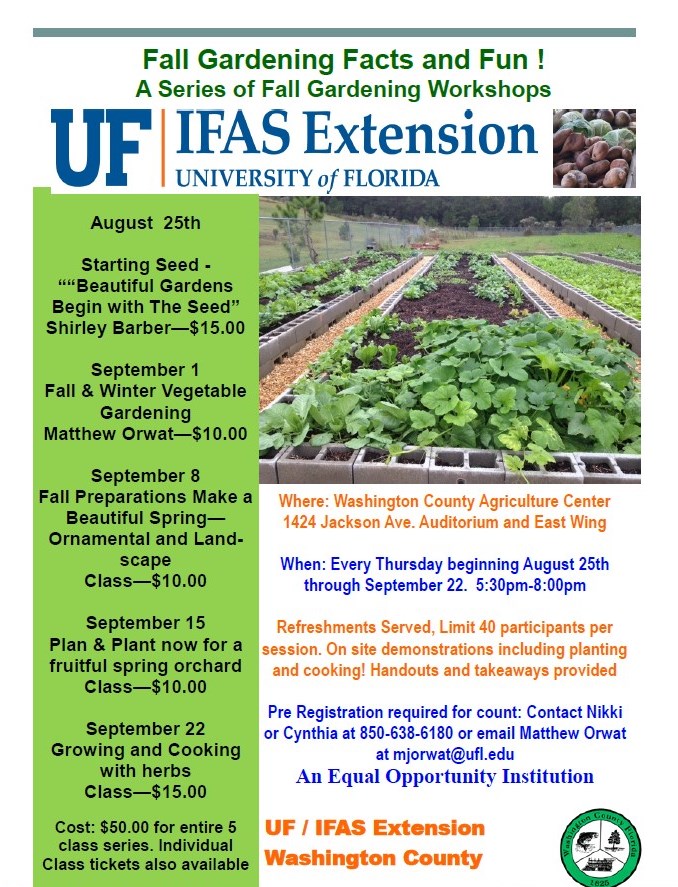
by Matthew Orwat | Aug 11, 2016

Click below for more info
http://washington.ifas.ufl.edu/blog/2016/08/10/upcoming-fall-gardening-workshop-series/

by Daniel J. Leonard | Apr 27, 2016
People are, by nature, skeptical. Humans are and have always been questioners of the world around them and that’s a good thing! For instance, when one reads a sensational article on Facebook or watches an infomercial selling a too-good-to-be-true product he/she is immediately dubious of the veracity of the claim. Given this innate sense, why do consumers take plant tags displayed on retail plants and the information listed there as infallible fact when in reality they are often full of hyperbole and misleading?
I do not mean to insinuate that nurseries and landscape professionals are intentionally leading consumers astray. They are not. However, there is much incorrect information disseminated to consumers by the green industry on plant fact sheets. Take my titular example, ‘Little Gem’ magnolia is widely advertised and sold as a “dwarf” magnolia, only growing 15’-25’ tall. If given proper care, it will grow to that height…in seven to ten years. Given enough time, ‘Little Gem’ has will grow in excess of forty feet. People plant this cultivar under the eaves of single story houses on a regular basis! I promise that cute little magnolia you were told would grow 15’ tall will look rather silly when it is four times the height of your house. Take another example, how many times have you seen or heard of ‘Acoma’ crapemyrtle being sold as a “semi-dwarf” cultivar that grows to 10’ in height for use in a tight spot of the landscape in lieu of the much larger ‘Natchez’? It will fill that tight spot and fill it rather quickly. ‘Acoma’ can easily reach 20’ in height and width at maturity, engulfing its intended area.
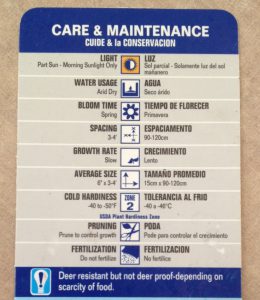
Typical plant tag. Notice the “Average Size” section. This is where consumers should use discretion.
So why does this happen? Why are plant tags so often mistaken? There are two primary reasons that correct mature sizes are not given. First, in the competitive world of plant breeding and introduction where there can be hundreds or thousands of cultivars of a single species, it is of utmost importance to introduce plants as quickly. Quick introduction is necessary because others are probably working to find similar traits; therefore, if one notices that a plant possesses a drastically different flower, flowering pattern, leaf shape, leaf size, or growth habit, the plant is often rushed to market. This leaves little time for complete trials of the plant to see what it would look like at maturity.
Secondly, most well-adapted or native trees/shrubs have relatively long life spans. A crapemyrtle or magnolia can easily grow and thrive in a landscape for thirty years or more before reaching maximum size. Nurseries simply do not have time to evaluate plants that long. Many nurseries, due to vagaries of economic cycles and length of career spans, don’t even exist for thirty years much less trial a single plant for that length of time!
In conclusion, nurseries are not likely to change their plant tag practices, but there are a couple of checks consumers can use to make sure they buy an appropriate plant for the scale of their site. First, it is a good rule of thumb to double the advertised plant height to arrive at a better idea of the plant’s mature size. Second, drive through established neighborhoods and observe what certain plants look like in a mature landscape. This will give one an idea of what the plant is capable of. The third and best option is to consult your local County Extension Office. They will be able to offer research-based information to help you make the right decision in your plant choices. Keep this in mind the next time you are thinking of buying the latest, greatest plant at your local nursery!
Happy Gardening!










